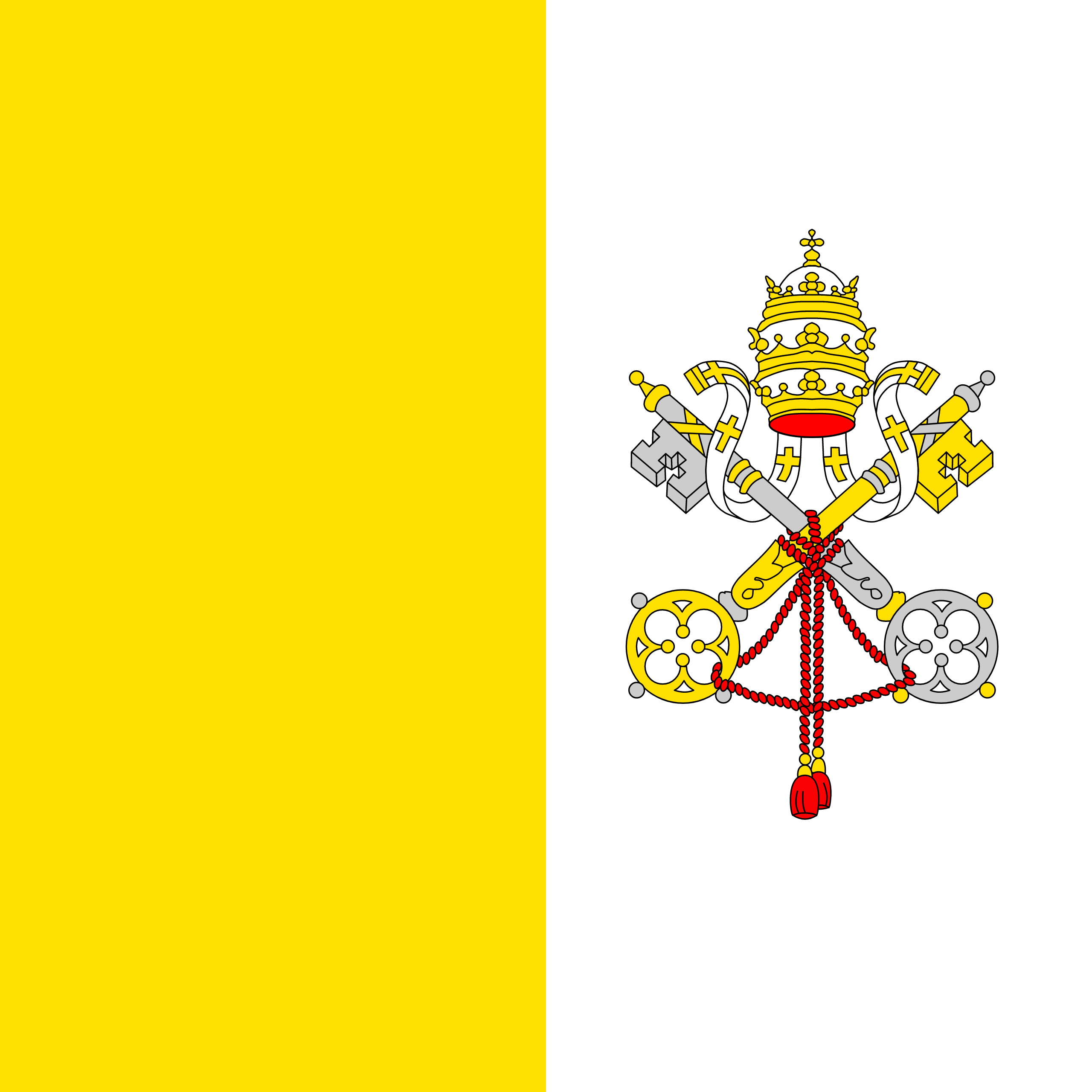What is the meaning of the Holy See flag?
The Holy See flag represents the sovereignty of the Pope and the Holy See.
Why does the Holy See flag have yellow and white colors?
The yellow and white colors on the Holy See flag represent the gold and silver keys of Saint Peter, the patron saint of the Catholic Church.
What is the history of the Holy See flag?
The Holy See flag has a long history dating back to the 13th century when Pope Innocent III used a red banner with the keys of Saint Peter. The current design was adopted in 1929.
What is the difference between the Holy See flag and the Vatican City flag?
The Holy See flag represents the sovereignty of the Pope and the Holy See, while the Vatican City flag represents the sovereignty of the Vatican City State.
Who designed the Holy See flag?
The designer of the Holy See flag is unknown.
What do the keys on the Holy See flag represent?
The keys on the Holy See flag represent the keys of Saint Peter, which symbolize the power of the Pope to forgive sins and grant access to heaven.
Is the Holy See flag recognized internationally?
The Holy See flag is recognized internationally as a symbol of the sovereignty of the Pope and the Holy See.
Can the Holy See flag be flown outside of Vatican City?
The Holy See flag can be flown outside of Vatican City, but it is typically only flown at diplomatic missions and other official Catholic Church locations.
What is the significance of the emblem on the Holy See flag?
The emblem on the Holy See flag represents the keys of Saint Peter and the papal tiara, which symbolize the authority of the Pope.
How is the Holy See flag used in religious ceremonies?
The Holy See flag is used in religious ceremonies to represent the authority of the Pope and the Catholic Church. It is often carried in processions and displayed during Mass.
